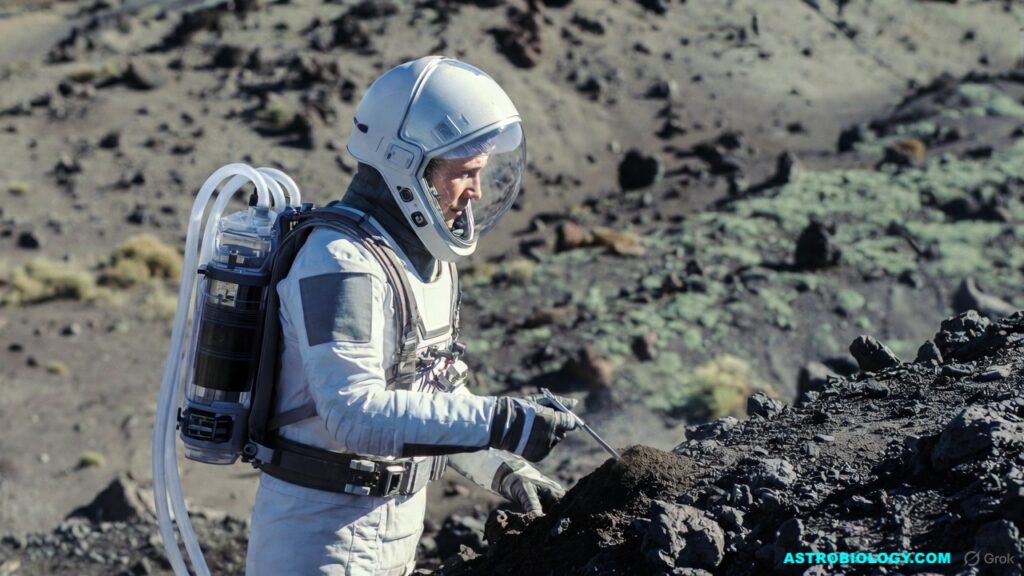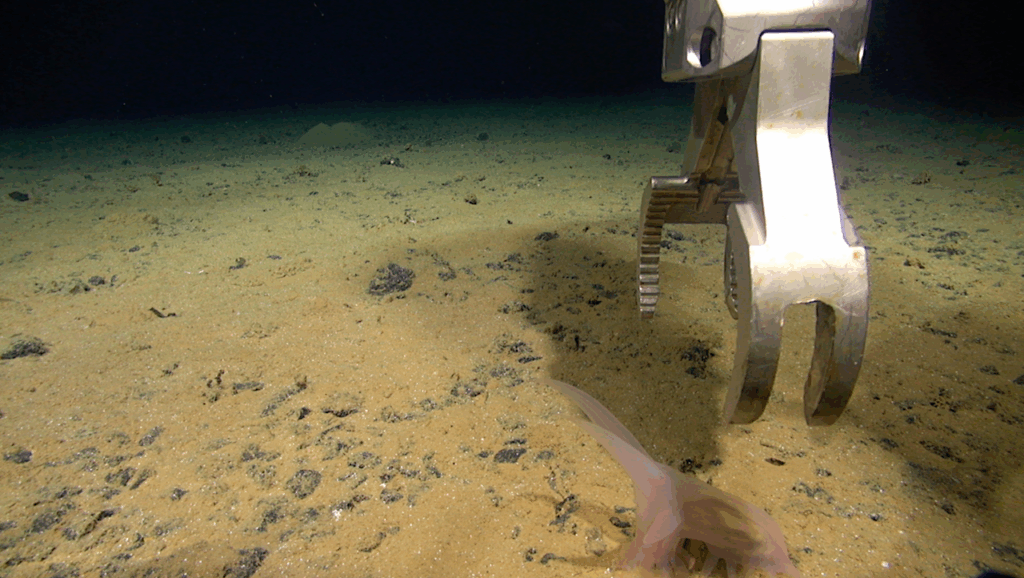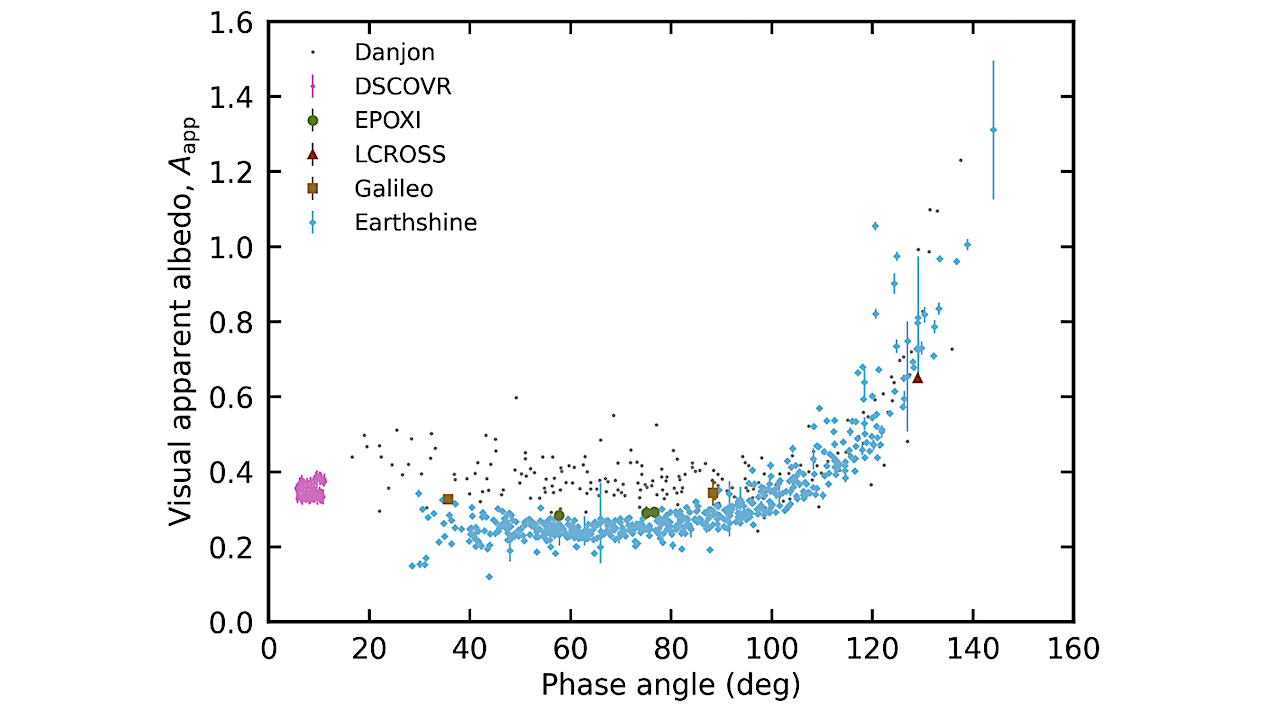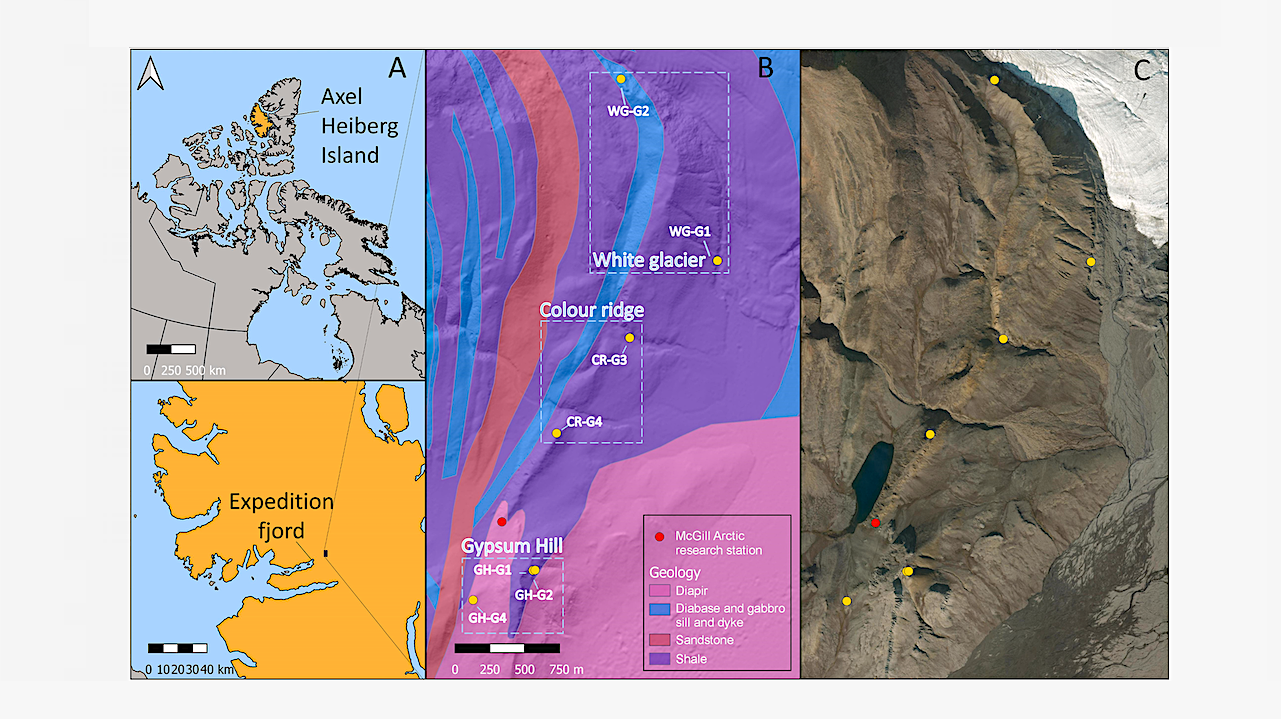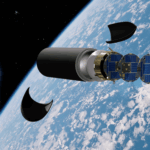Now Reading: Exploring Impact Vapor Plume Reactions from Asteroidal Impacts: Monte Carlo Simulations and Implications for Biomolecules Synthesis
-
01
Exploring Impact Vapor Plume Reactions from Asteroidal Impacts: Monte Carlo Simulations and Implications for Biomolecules Synthesis
Exploring Impact Vapor Plume Reactions from Asteroidal Impacts: Monte Carlo Simulations and Implications for Biomolecules Synthesis
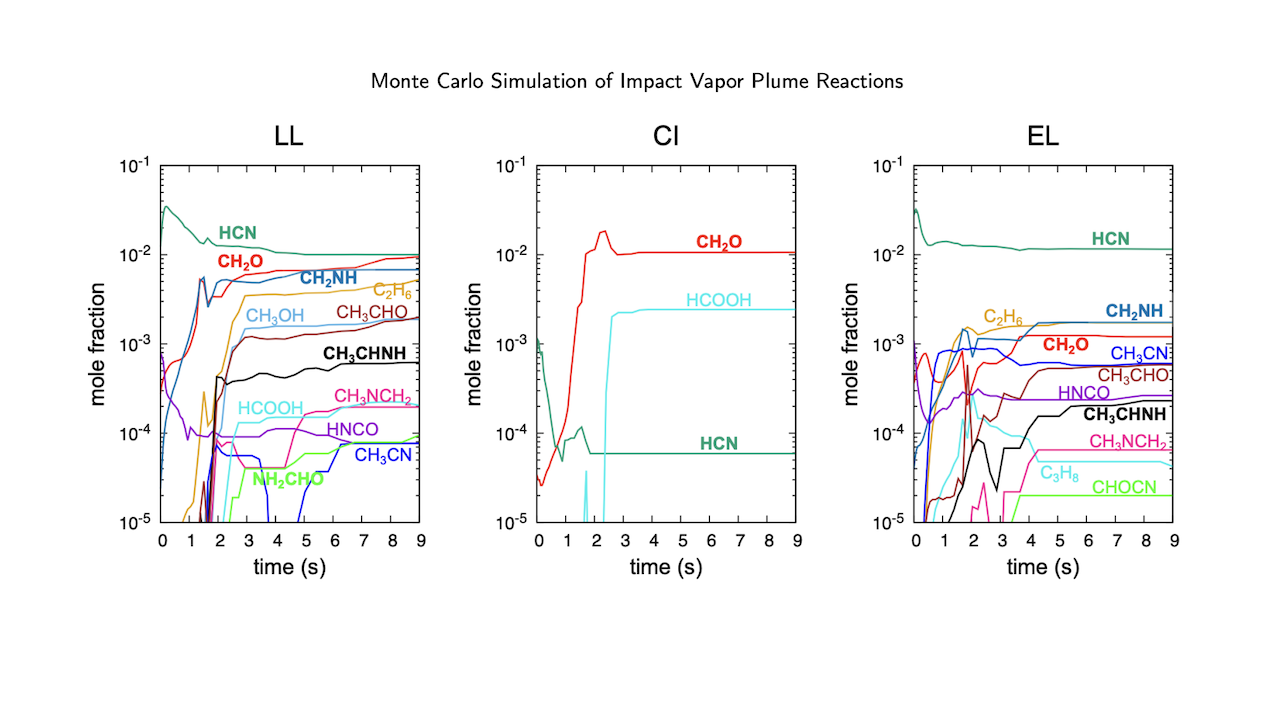

Time evolution of mole fractions of organic molecules. The molecules represented by each chemical formula are as follows: hydrogen cyanide (HCN), formaldehyde (CH2O), methanol (CH3OH), formic acid (HCOOH), isocyanic acid (HNCO), methanimine (CH2NH), ethanimine (CH3CHNH), N-methylmethanimine (CH3NCH2), acetaldehyde (CH3CHO), acetonitrile (CH3CN), formamide (NH2CHO), formyl cyanide (CHOCN), ethane (C2H6 ), propane (C3H8 ). Molecules considered particularly important for biomolecule synthesis (see Section 3.2.2) are indicated with bold lines. — astro-ph.EP
During a hypervelocity impact, both the impactor and target materials evaporate, generating an impact vapor plume with temperatures reaching several thousand K.
As the plume cools through adiabatic expansion, chemical reactions are predicted to quench, leading to a non-equilibrium composition. However, it is still unclear how chemical reactions proceed during the cooling impact vapor plume and lead to the synthesis of organic molecules.
In this study, to investigate the evolution of chemical composition within impact vapor plumes, we conducted a Monte Carlo chemical reaction simulation for complex organic synthesis, developed in our previous work. Our model does not rely on a predefined reaction network; instead, it utilizes imposed conditions for chemical changes and an approximate method for calculating reaction rates suited to our objectives.
Additionally, we developed a new approach to couple these chemical reaction calculations with the rapid temperature and pressure decay in the vapor plume.
Results show diverse organic molecule production depending on the impactor materials assumed in this study. These products include important precursors to biomolecules such as amino acids, sugars, and nucleobases. On the other hand, for all impactor compositions, the abundance of biomolecules themselves remains extremely low throughout the reactions from an impact to quenching.
Therefore, our results suggest that biomolecules are not directly produced in impact vapor plumes but rather synthesized through reactions of these precursor molecules in aqueous solutions, following H2O condensation as the vapor plume cools. Many of the detected organic compounds, including the precursor molecules such as imine compounds and formamide, are not included in the reaction networks of previous kinetic model simulations, and their formation has not been predicted.
Yoko Ochiai, Shigeru Ida, Daigo Shoji
Subjects: Earth and Planetary Astrophysics (astro-ph.EP)
Cite as: arXiv:2507.22491 [astro-ph.EP] (or arXiv:2507.22491v1 [astro-ph.EP] for this version)
https://doi.org/10.48550/arXiv.2507.22491
Focus to learn more
Related DOI:
https://doi.org/10.1016/j.icarus.2025.116736
Focus to learn more
Submission history
From: Yoko Ochiai
[v1] Wed, 30 Jul 2025 08:56:53 UTC (2,166 KB)
https://arxiv.org/abs/2507.22491
Astrobiology
Stay Informed With the Latest & Most Important News
-
 012024 in Review: Highlights from NASA in Silicon Valley
012024 in Review: Highlights from NASA in Silicon Valley -
 02Panasonic Leica Summilux DG 15mm f/1.7 ASPH review
02Panasonic Leica Summilux DG 15mm f/1.7 ASPH review -
 03From Polymerization-Enabled Folding and Assembly to Chemical Evolution: Key Processes for Emergence of Functional Polymers in the Origin of Life
03From Polymerization-Enabled Folding and Assembly to Chemical Evolution: Key Processes for Emergence of Functional Polymers in the Origin of Life -
 04How New NASA, India Earth Satellite NISAR Will See Earth
04How New NASA, India Earth Satellite NISAR Will See Earth -
 05And Thus Begins A New Year For Life On Earth
05And Thus Begins A New Year For Life On Earth -
 06Astronomy Activation Ambassadors: A New Era
06Astronomy Activation Ambassadors: A New Era -
07SpaceX launch surge helps set new global launch record in 2024












